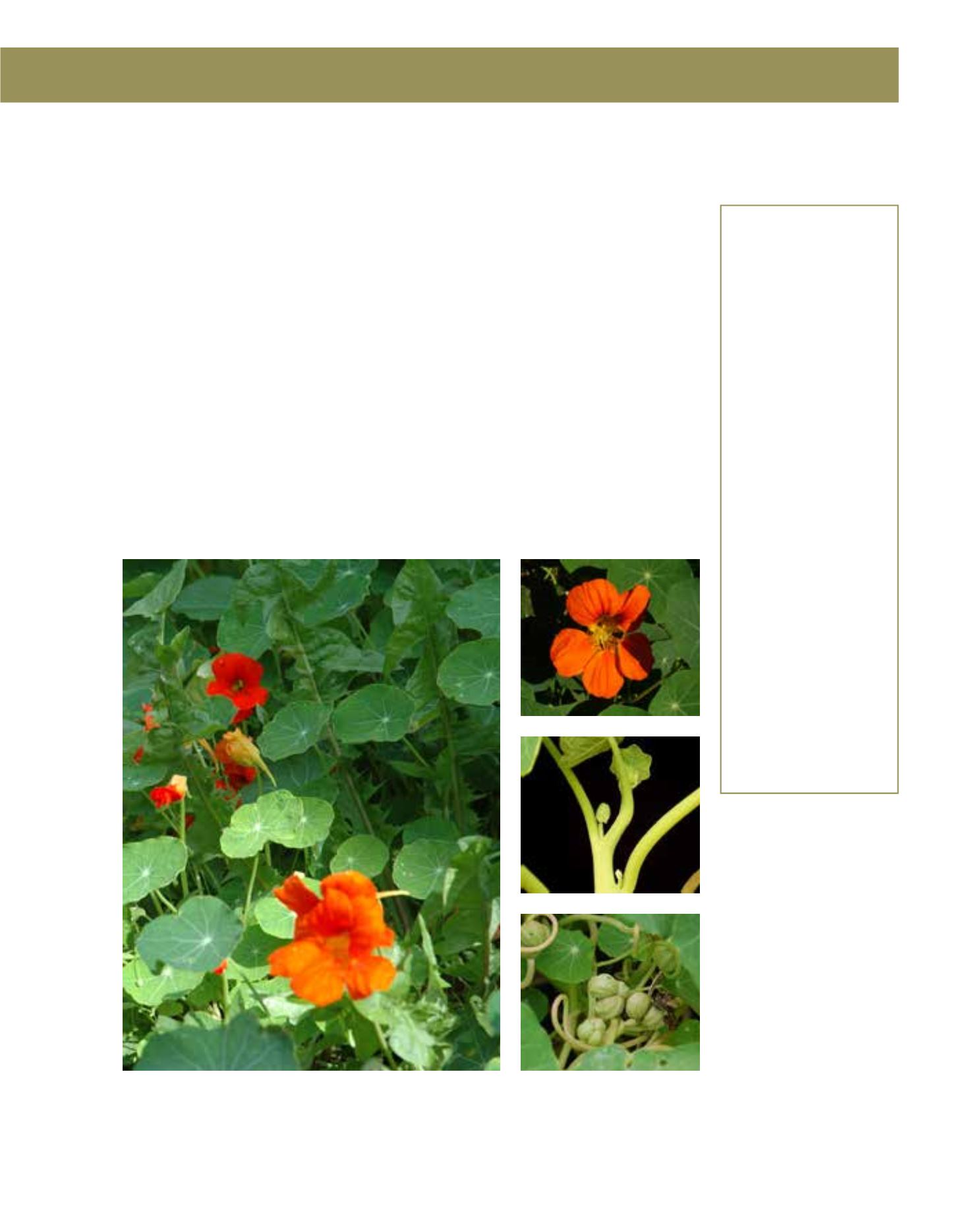

GENERAL
Origin
:
Mediterranean,
sub-tropical,
tropical
Vigour
:
fast growing
Humidity
:
semi-arid, semi-
humid, very
humid
Propagation :
direct sowing,
sowing and
pricking out
Maintenance :
moderate
CONDITIONS
Urban climate :
resistant
Dessication :
vulnerable
Stagnant water :
vulnerable
Irrigation
:
medium
Salinity/ppm :
moderate (1500
ppm)
Hardiness
:
+3°C
SHAPE
Type
:
annual, biennial,
perennial
Height
:
0.2 m-2 m
Spread
:
1 m-7 m
Foliage
:
semi-evergreen
FLOWER
Colour
:
orange
Period
:
June - September
Smell
:
scented, flower
FRUIT
Type of fruit :
nutlet
Fruit size
:
0.8 cm
Toxicity
:
edible when
processed
Tropaeolum majus has several common names such as Indian Cress, Monks Cress or Garden Na-
sturtium. It is indigenous to South America, central Peru, Colombia, the Andes and Bolivia. Its
preferred climates are from Mediterranean to tropical. The Nasturtium is a fast-growing herbace-
ous annual that creeps to 7 metres and climbs to 2 metres. The Nasturtium will die with the first
frost, but is otherwise relatively long-lived for an annual. It is an ornamental plant that is useful
as a medicinal plant and as a salad. The bloom and the leaves are very tasty with an enjoyable
peppery taste. The leaves are green in colour, alternately arranged with an orbicular peltate shape.
They grow up to 10 cm in length. The flowers appear in summer. Propagation is by direct sowing,
or sowing and pricking. In good site conditions, Tropaeolum will propagate itself through self-
seeding. Salinity should be low. It needs a sheltered location with sufficient irrigation, humidity,
no stagnant water and shade in particular. In Arriyadh, it can be recommended for winter colour
in sheltered situations with some shade: planting in close contact with people may be a problem,
because the stems break easily. Use will be possible for urban areas, in public open space, in pe-
destrian precincts, parks and private gardens. It also makes a good container plant and a screen,
when grown on a trellis. The Nasturtium is attractive in groups or as a groundcover or climber.
306
Tropaeolum majus,
Tropaeolaceae
Indian Cress,
Nasturtium
















